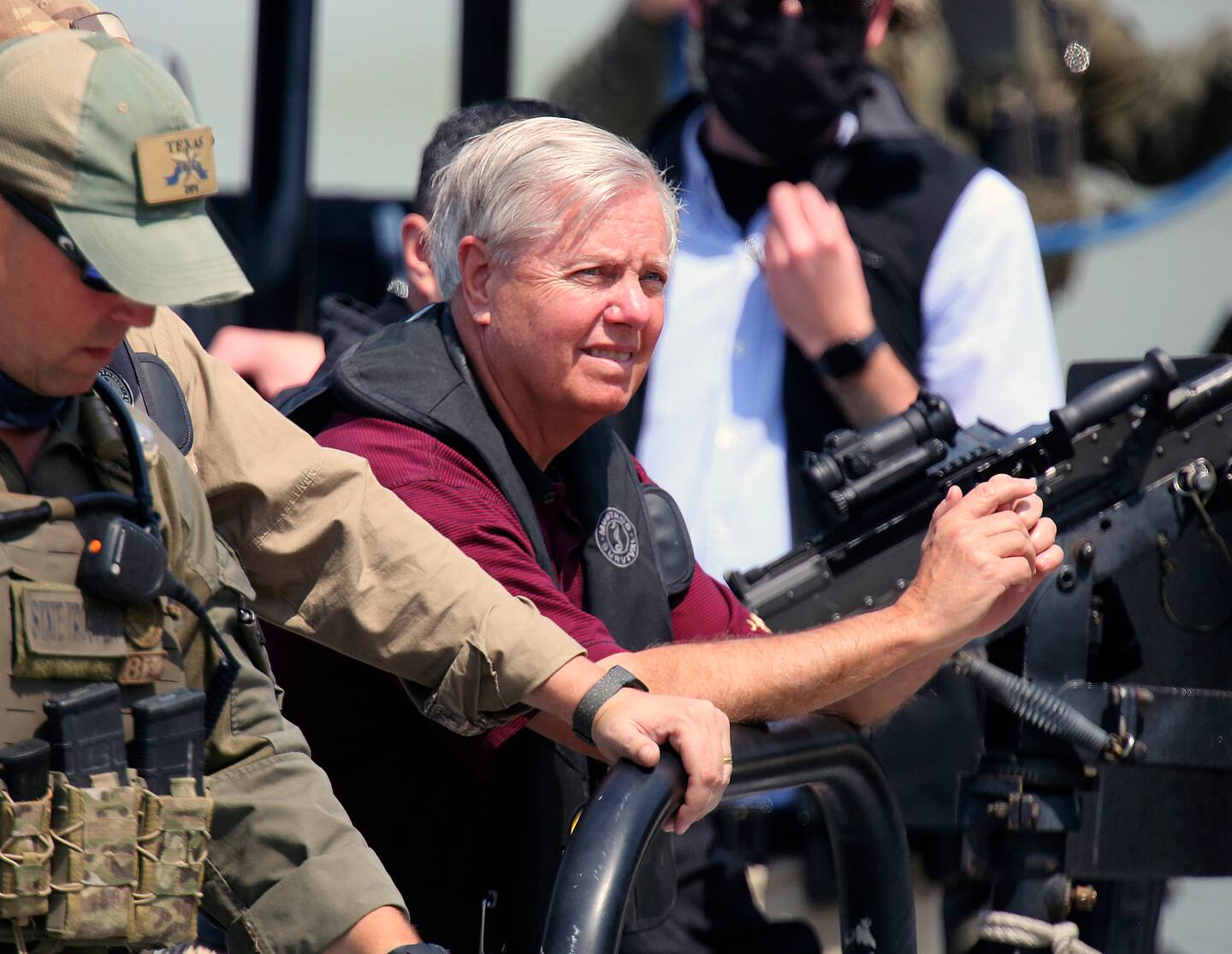Lindsey Graham’s AR-15 scenario is not the reality of South Carolina gun violence

In an interview with Sen. Lindsey O. Graham (R-S.C.) on Sunday, though, Fox News’s Chris Wallace prompted the senator to explain why he’d reacted so negatively to the elevation by Democrats of possible new gun-control measures following the shooting.
“What’s wrong with a serious debate after all of these shootings about assault weapons and especially about large-capacity magazines, which a lot of studies show contribute to these mass killings?” Wallace asked.
“There’s nothing wrong about debates,” Graham replied, adding that he was confident no measure banning semiautomatic rifles such as the AR-15 would pass the Senate.
Graham then offered a defense of the utility of such weapons, which have been linked to a number of recent mass shootings.
“If there’s a natural disaster in South Carolina where the cops can’t protect my neighborhood, my house will be the last one that the gang will come to because I can defend myself,” Graham said. “You don’t have to have an AR-15, but if you have one lawfully, I think you should be allowed to keep it.”
This is a very specific scenario, evoking a Rambo-esque Graham standing on his front porch spraying bullets at encroaching marauders — gang members, to use Graham’s specific evocation. Despite the specificity, it’s a familiar framing for such debates: I need to be able to protect myself in a what-if scenario.
It’s a useful framework in part because it’s to some degree unassailable. In the event that you are facing a violent threat and there isn’t anyone else to help you, it might in fact be helpful to have a firearm. It may also increase the likelihood that you yourself will be shot, according to research, but let’s set that concern aside for the moment.
The question, then, is how often such one-off scenarios actually occur. Is the threat significant enough to offset the risk involved in having a firearm in one’s house, such as accidental shootings? (There have already been at least nine such incidents in South Carolina this year.)
It’s hard to count precisely how many incidents match the broad parameters of Graham’s self-defense scenario, but we can estimate it. Using data compiled by the FBI’s Uniform Crime Reporting Program, we can see that there were 353,746 criminal incidents in South Carolina in 2019. About 52,000 of those were burglaries, 19,500 of which happened at residences. Of those, more than 18,600 didn’t involve any weapons. More than 700 did involve the use of a weapon, as indicated by later law enforcement reports — a number that includes “personal weapons” such as fists.
To cut to the chase, there were 241 incidents in South Carolina that year in which a residential burglary included the use of a firearm. Of that number, 126 involved forcible entry, though it’s not clear how many of them occurred when people were at home. There were also 109 incidents in which someone was kidnapped or abducted at a residence in an incident involving a firearm.
That’s about 235 incidents in 2019 that might involve most of Graham’s parameters: someone committing a burglary or kidnapping at a residence with a firearm involved. That data definitionally doesn’t comport with another central part of Graham’s anecdote: These data come from police reports, meaning that police responded to the incidents. It’s very safe to say that the number of occasions on which police couldn’t respond were far, far smaller.
Nonetheless, it’s what we have to work with. So how do those figures look in the context of gun violence in the state? Well, there were 1,012 gun deaths in South Carolina that same year, according to data from the Educational Fund to Stop Gun Violence.
That’s an apples-to-oranges comparison that doesn’t tell us much. If we instead look at a subset of that gun violence — suicides — and expand our violent incident count to include every burglary and kidnapping involving a weapon that wasn’t a fist, we see that there were still more gun-involved suicides in the state than incidents in which someone such as Graham might feel the need to be armed.
That comparison is a reminder of the cost-benefit analysis that comes into play with gun ownership. No gun owner wants to see his or her firearm used in an accidental shooting or in a suicide. But those things happen. The research on this subject is unambiguous. As a 2011 report concluded, “[g]uns kept in homes are more likely to be involved in a fatal or nonfatal accidental shooting, criminal assault, or suicide attempt than to be used to injure or kill in self-defense.” That matches our South Carolina data.
And, at its heart, that’s the trade-off that Graham is defending. How do we balance his concern about being able to fend off a post-hurricane mob over the dangers of his having a firearm in his home? Assuming that rifle stays in his home; in 2019, $5.1 million in firearms were stolen in burglaries in South Carolina.
It’s not a trivial question to answer, as decades of debate have made clear. But it is safe to say based on the numbers above and on past research that it is more likely that a firearm in someone’s home will be used for a suicide than for self-defense in a police-free dystopia.






